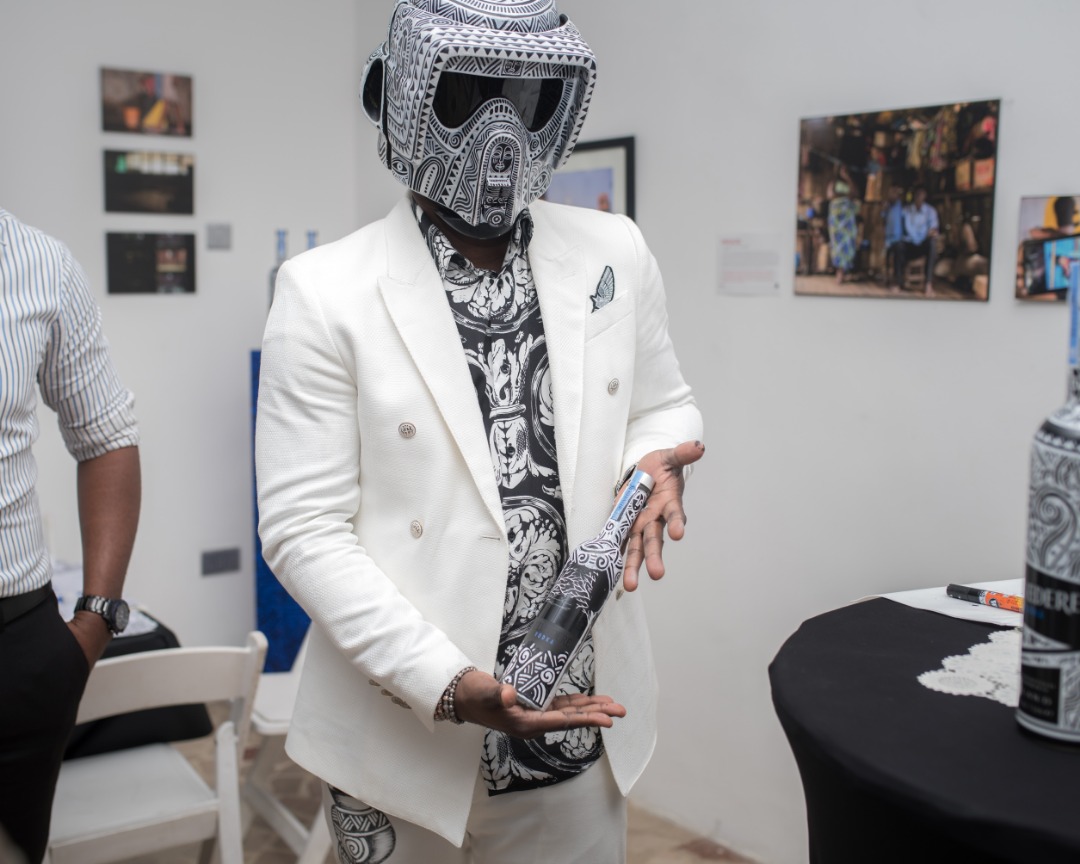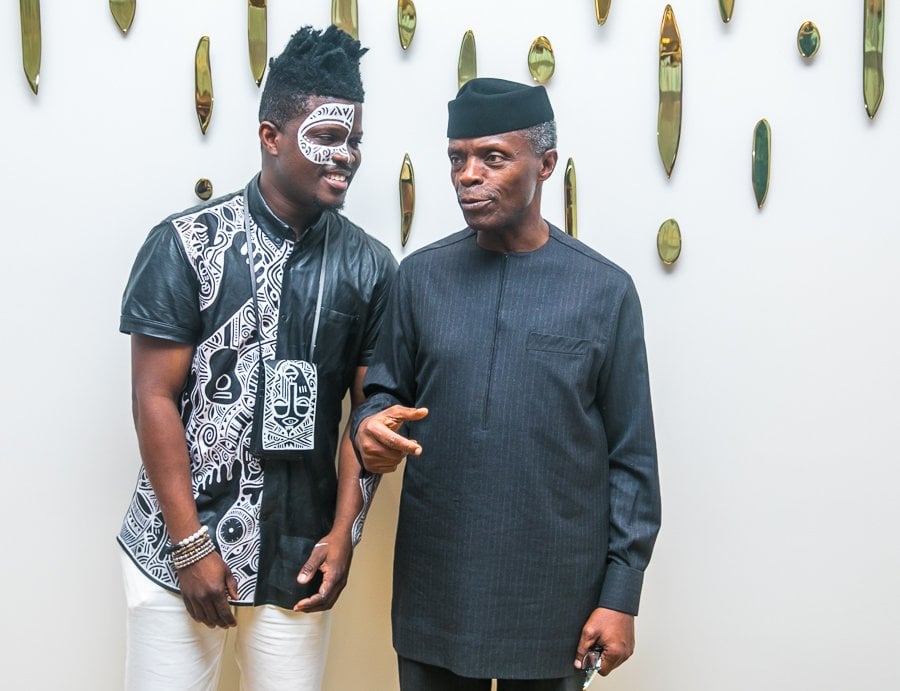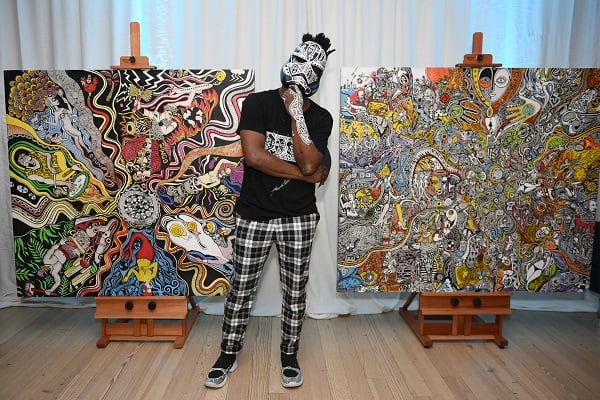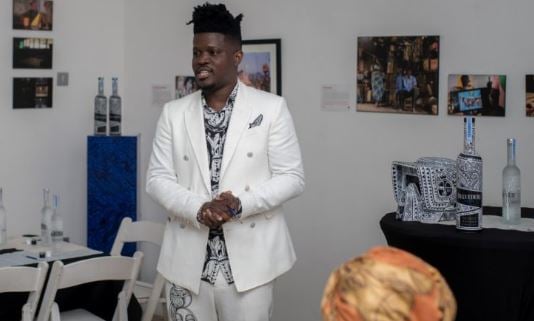Laolu Senbanjo first came into global prominence after his body-painting art was featured in Beyoncé’s Grammy-winning visual album, ‘Lemonade’.
Since then, the musician/visual artist has stayed active and relevant, collaborating with brands like Nike, Bvlgari and Belvedere Vodka. He has also worked with celebrities such as Alicia Keys, Swiss Beatz, Seun Kuti, Tony Allen, Alek Wek and Danielle Brooks.
In this interview with TheCable Lifestyle, Senbanjo talks about promoting Yoruba tradition abroad, his art and evolution as a visual artist.
Over the past few years, you’ve grown from an Instagram celebrity to making appearances at New York art institutions. Has this had any impact on the value, growth and interest in contemporary African art and cultures?
Yes. I think recognition cannot be overemphasised. One of the reasons I moved to New York was to find a way to open up my part of the world to new audiences. Partnerships and collaborations such as the ones I have participated in go a long way in shining a light on great work done on my continent and in places that are not entirely accessible to global media.
Your work has expanded the conversation about indigenous African art. How do you interpret your work for a global audience while still being faithful to the source and inspiration for it?
It is a joy to now be able to say that Yoruba art is a language like renaissance art in Europe. That Sango, god of fire is comparable to the Greek god Zeus and so on. To be able to have conversations about Yoruba mythology and Yoruba art on the same platform as other art from cultures that are better known globally brings me great contentment. It means that we have more that allow us to understand each other’s differences than the things that make us reject the same differences.

In your work as an artist, do you feel restricted to perform or conform to the stereotypes about, and false vision of, Africa?
There is definitely a kind of pressure that would cause one to conform to what others already expect of you. And admittedly, it wasn’t easy to “speak up” which in this case, do art that may not be immediately understood or recognized but that is true to who I am as an artist and as Yoruba. Over time, I have found that once people drop the guard that asks them to reject what they don’t know and instead seek to experience it, they begin to embrace the beauty that is found in discovery.
You often draw inspiration from Yoruba traditions. Due to colonialism, these deities and traditional practices have been much ignored here in Nigeria. Do you believe Africans would make more impact if they reconnected with their ancient systems?
I think that anyone is more impactful if they retain an honesty in who they are and where they are from. While the conversation on colonialism and its impact on artistic expression is well documented, there are nuanced conversations regarding choices that artists make now because of this impact. Some choose to “embrace” Osogbo style art very reminiscent of classic Yoruba art and other recognisable traditional Nigerian art, others create a fusion that includes art we refer to as “western”. The idea is to allow the artist to make autonomous decisions regarding their choices and for the artist to be assured within themselves that they are being true to who they are.

You are also a musician with a number of songs under your belt. How do you navigate across the different mediums: visual art and music?
Artistically, I think that my music and my art mirror each other. They are both about saying something, speaking to issues, reflecting and expressing ideas. In this way. I find that it is pretty easy to juggle both. However, as far as time and investment in to either one as a career is a different conversation, they are like demanding pet lambs, both vying for attention and woe to me because I love them both!
Your work with the Ori has gained mainstream attention and is increasingly featured on shoes, bottles, clothes. Do you think your clients and followers understand and appreciate the value/mystery of the Ori?
I truly believe that the Ori speaks to your heart. You are not always able to say why you feel the art speaks to you but you know it does. The Yoruba of old who embraced the Ori ages ago knew of the great power in recognizing your own ability, awakening your own strength and practicing your own agency. I truly believe anyone can recognize that when they encounter it.

So far how do you feel about your evolution as an artist? What should we expect in your future works?
I am excited about what other canvases I will discover and what other spaces this will allow me to go in to. I am looking forward to doing a lot more work in Nigeria, so stay tuned.
Finally, you’ve collaborated with a number of brands, including Nike and Bvlgari. Can you please tell us more about this collaboration with Belvedere?
Belvedere approached me to design a limited edition bottle that would demonstrate their values regarding revealing inner beauty. This resonated so much with me as the sacred art of the Ori is about letting the inner you shine through. In addition, Belvedere partnered with the RED campaign on this project whose work includes providing medical support to women living with HIV. I wouldn’t pass an opportunity to contribute in this way so I jumped in! One of the things you will notice about the bottle is the patterns that are symbolic of the extra care put in to making the vodka.
The Vodka making tradition in Poland spans six centuries and I Indicated that with hearts to represent passion. The vodka is made with just rye and pure water and you will see the triangles representing balance. You will also see the waves on the bottle and spirals representing beauty in infinity. We are hoping that you will enjoy the vodka and continue to enjoy the bottle as a piece of art on your shelf!
Copyright 2024 TheCable. All rights reserved. This material, and other digital content on this website, may not be reproduced, published, broadcast, rewritten or redistributed in whole or in part without prior express written permission from TheCable.
Follow us on twitter @Thecablestyle

